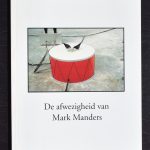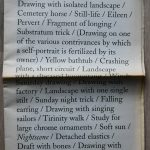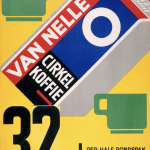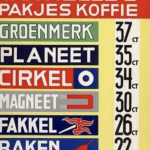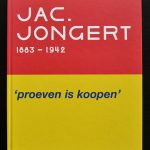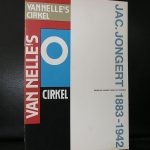
Just to illustrate the work by Mark Manders here follows a text he wrote in 1994.
The Absence of Mark Manders
Under a table you have the possibility to test your own absence. The realization that life is taking its course, even without you, is an intense human experience; it shows the finiteness of personality. Mark Manders has inhabited his self-portrait since 1986. This building can expand or shrink at any moment. In this building all words created by mankind are on hand. The building arises, like words, out of interaction with life and things.

The thoughts that surround him in his building are, materialized or not, always important and never gratuitous. ‘When years ago I went for a walk, I would walk through streets where sometimes a clothespeg would be lying, or, when I entered a place, there would be a table with, for instance, a telephone and an empty vase, briefly I would find myself in a world that I hadn’t determined myself. I decided to build a building next to that world, or rather, in that world. A building which was dominated by a changing arrest, where and through which I would be confronted continuously with my choice, the choice of Mark Manders.’ Mark Manders considers the world surrounding his building as an evolved organism that has been constructed from so-called semi-truths. These fall as some loose atom-truths in a kind of ‘encyclopaedia basement’, a space of about four by five metres, around which he constructs his building. Herewith, Mark Manders places his self-portrait as a building actually between two world views: the world as constructed from atom-like semi-truths and the one in which these truths are accepted as facts. Often, we are not afraid in our materialized projection, the world itself has been confided to us. I remember how we determined our first priority roads and that diviners (reading the future in liver) indicated the place of the city. Walking through my building, I get confronted everywhere with deep arrest, it is terrific, the things over here surmount my momentaneous thinking and are familiar to me, I never get bored.
Mark Manders, 1994
www.ftn-books.com has some nice Mark Manders publications available





















